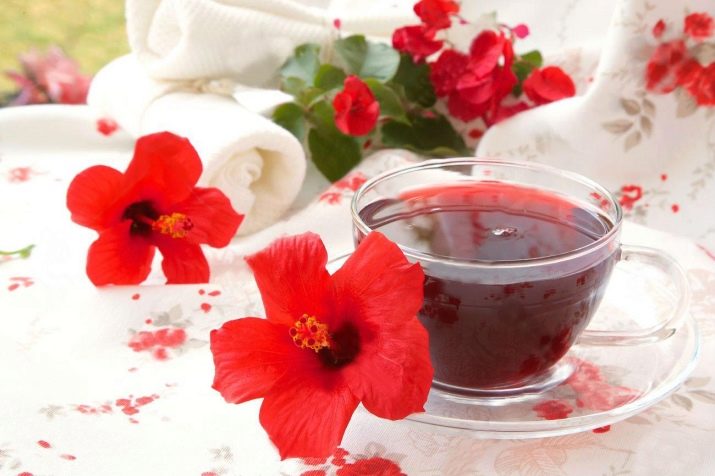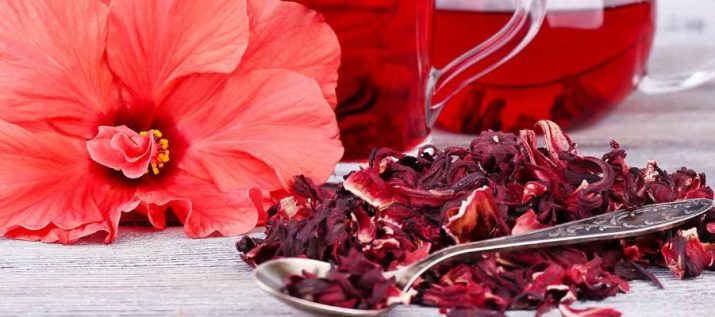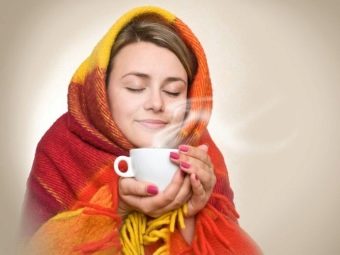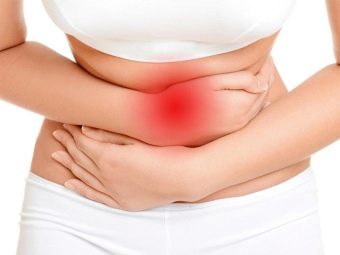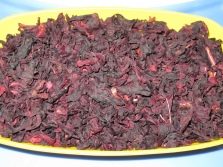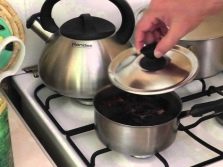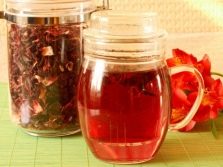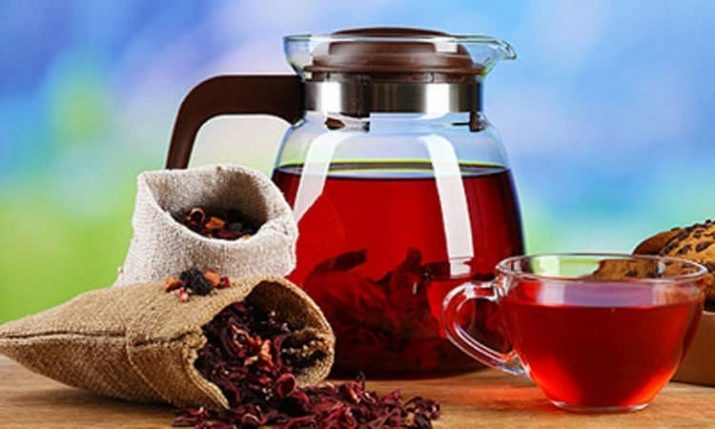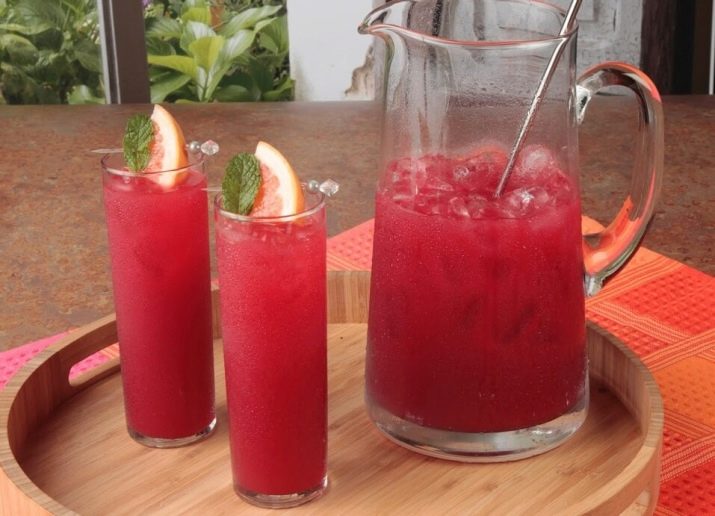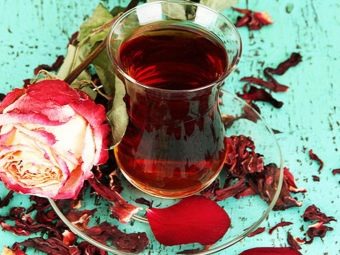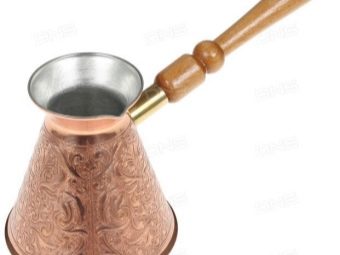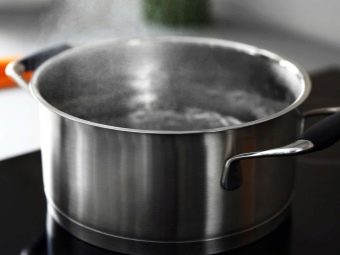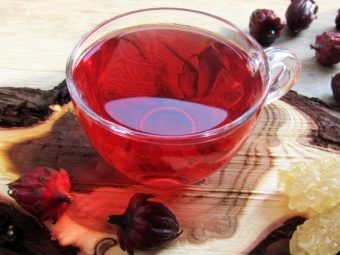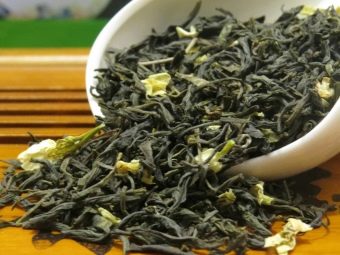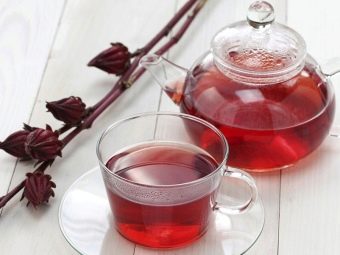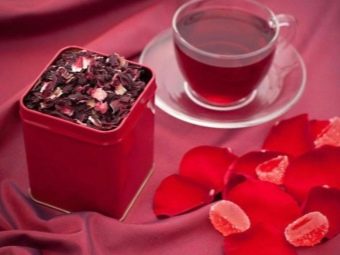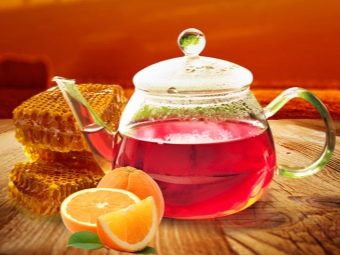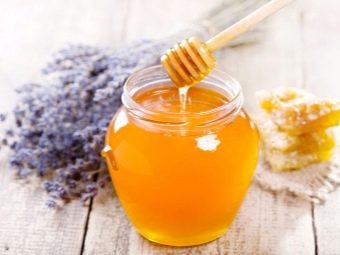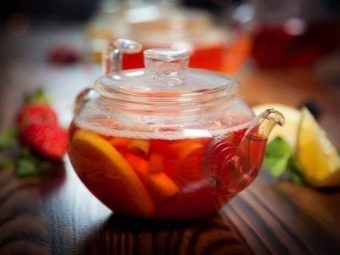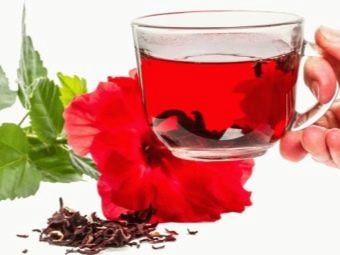Hibiscus tea: features and methods of welding
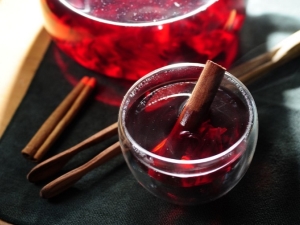
A drink with the unusual name of an intriguing and alluring red-brown hue with an original, slightly sour taste - it's all about karkad flower tea.It is based on hibiscus. This plant grows in the Arab countries and has a number of useful properties.
What it is?
Hibiscus is a type of Egyptian tea, which is based on hibiscus petals. Hibiscus, or Sudanese rose, is an annual herb. Belonging to the Malvaceae family, it has characteristic calyx inflorescences with bright red, fiery petals. The latter are used as raw material for the drink.
By the way, the stems and leaves of the plant are often used instead of salad greens, and even pickled as vegetables. From the petals, in addition to tea, you can prepare compotes and tinctures, make jam and jams.
Literally, the name of the tea translates as “drink of the pharaohs”, and initially it was available only to rich Egyptians, as evidenced by the carcade found in the tombs of noble people. Tea has taken root in many countries, so hibiscus has many variations of the name - Venice mallow, Jamaican red rose, Jamaican flower, red sorrel, etc.
Today, hibiscus for tea is grown in industrial quantities in Thailand, Sudan, Sri Lanka, Egypt and is supplied to all countries of the world. Many housewives also grow hibiscus at home. This is a room flower, referring to the Chinese rose species. Its petals are unsuitable for making tea.
The lack of care and ease of collection (the petals are harvested by hand and then dried) determine the affordability of the carcade. Should purchase more expensive large leaf tea. Milled petals are characterized by the presence of additives that reduce the benefit and impair the taste of the drink.
Benefit and harm
Tea was widely spread not only due to the original taste, but also to its beneficial properties. In the east, carcade is considered an effective drink from all ailments.
Its composition is characterized by a high content of natural acids - malic, tartaric, citric, ascorbic. At the same time, there are no acids in it that provoke urolithiasis, primarily oxalic.
The carcade is useful for vessels, since the anthocyanins that make up it strengthen the vascular walls, reducing their permeability. These same substances prevent the formation of fatty plaques on the walls of blood vessels (cause the formation of blood clots) and have antitumor properties.
Powerful, but gentle cleansing from toxins, as well as excretion of toxins, flavonoids and polysaccharides stimulate the protective functions of the liver. The latter are also considered natural immunostimulants. Vitamin C, which is part of tea, allows to strengthen the immune system.
The ability to remove toxins and strengthen the body allows you to use tea as a regenerating and cleansing agent after poisoning (including a hangover), for diseases, prolonged use of antibiotics.
Sudan rose extract very carefully treats the intestinal microflora, while providing an antibacterial effect against intestinal infections, staphylococcus, bacilli.
It is also interesting that karkade is recommended both for hypertension (high blood pressure) and hypotension (low pressure). To reduce the pressure indicators, they drink it cold, to increase it, hot or warm.
Antibacterial and anti-inflammatory properties of tea, as well as the presence of ascorbic acid in it make it possible to give it to patients as a drink with laryngitis, tracheitis, bronchitis, colds. In addition to its firming action, it helps to dilute phlegm.
The unusual, slightly sour taste of tea perfectly quenches thirst. When hot, it has antipyretic and mild analgesic action. Drink copes with signs of fatigue, restores strength and improves appetite.
Like any drink, Hibiscus tea is not suitable for people with individual intolerance to its components. The high content of acids in it can be dangerous for people suffering from gastritis with high acidity.Before use, it is better to consult a doctor.
During exacerbations of gallstone or urolithiasis, diseases of the gastrointestinal tract, as well as during stomatitis and gingivitis, the use of herbal tea from Sudanese rose should be abandoned.
Pregnant women can also drink hibiscus, but only weakly brewed. In the later stages of pregnancy, as well as in toxicosis, it is better to refuse the use of a drink from the Sudanese rose.
The future mother should be guided by her own state of health. Someone carcade helps suppress nausea, while others say the opposite effect when drinking tea.
How to brew?
The classic recipe for brewing carcade involves pouring 1 tablespoon of dry raw 250 ml of boiling water. Its temperature should be within 90-95 degrees. The optimal time for brewing tea is 3 hours on a closed lid and a towel laid on top of the kettle.
Taste and benefits depend on the concentration of dry tea, water temperature and time of infusion. The latter can range from a couple of hours to the whole night. It is important to use solid, not milled hibiscus petals.
After the specified time, the tea is poured into a saucepan and is brought to a boil at maximum heat. After boiling the drink for another 5 minutes should be kept on the stove, then turn off the heat, filter.
As you can see, the correct technology of brewing tea requires a considerable amount of time. However, at home, there is a quick way to brew karkade. In a heated teapot (for this you can hold it for a short time in the microwave or on the stove, as well as scald with boiling water), hibiscus is poured and boiling water is poured. The proportions are 1: 6, that is, about 20 ml of water should be taken for 20-25 g of tea.
The teapot should then be covered with a lid and wrap with several layers of towels. You can start drinking tea in 15-30 minutes. The more it is possible to withstand the time of brewing, the brighter the taste of the drink will be revealed.
Unusual, slightly sour taste of hibiscus perfectly copes with thirst and can be consumed chilled. In this case, you can cook it in cold water. To do this, 250 ml of fresh, suitable for drinking water should be put in the fridge for an hour. You can add ice cubes.
The teapot should also be sent to the fridge for 10-15 minutes or left to stand for a couple of minutes under running cold water. The next step is to fill up 60 g of carcade and pour over glasses of chilled water. Then the kettle for an hour is placed in the refrigerator. After the specified time, the drink should be drained.
You can add a sprig of mint or a slice of grapefruit, ice to taste.
Another brewing variant of the hibiscus is to cook it in a Turk for coffee. At the same time, tea prepared according to this method retains the maximum amount of useful components. For brewing, only a Turk is suitable; its size is more than 300 ml.
In the Turk, 60-80 g of dry tea should be poured and 280 ml of boiling water should be poured over it, after which the composition should be brought to a boil. As soon as bubbles appear, add 2-4 buds of cloves and a small pinch of cinnamon to it. After that, you should give the drink to boil and remove from heat. As soon as the bubbling stops, the Turk should be returned to the stove. Such actions (bringing to a boil and removing from heat) should be carried out 3 times.
After that, the drink can be filtered and immediately poured into cups, adding sugar, honey, candied fruits, and dried fruits to one’s discretion.
Almost all enzymes and amino acids contained in hibiscus can be saved by brewing in the following way. To do this, 300 ml of cold water in a skillet should be put to heat on the stove. As soon as the first signs of boiling appear, the water should be removed from the fire, preventing its boiling. Fluid temperature should be about 75-80 degrees.
In a teapot of porcelain or ceramics should pour 60 g of hibiscus tea and fill it with water.After that, take the bulk pan (the teapot should fit into it) with a thick bottom. Dip the teapot into it and fill it with warm water so that it reaches the hanger of the kettle. Now you should turn on the burner and heat the pan for 5-7 minutes.
After the specified time, turn off the burner and leave the kettle in a saucepan with water until it cools completely. Usually it is about 6 hours, after which the tea is filtered and is considered ready for use.
Tea from Sudanese rose in harmony with vanilla and jasmine. You can boil the drink by adding 20 g of jasmine petals to 30 g of carcade. The volume of water is 250 ml. You can brew it on the classic technology. Instead of jasmine, you can use vanilla sticks or 20 g of vanilla sugar per 45 g of tea and 300 ml of boiling water. Putting vanilla follows while infusing a drink.
Regardless of the chosen method of brewing, you should follow certain recommendations:
- high quality raw materials should be taken - the petals should be whole, completely dried, have the same shade on the entire surface;
- the proportions of water and tea depend on the recipe, and the rule should be - 1.5 teaspoons of petals per 250 ml of water;
- for brewing, it is better to use porcelain, earthenware, in the extreme case - a glass teapot, it is better to refuse metal dishes - it “kills” the taste of the drink;
- when using a clay teapot, it is recommended to have a separate look for each type of tea, since the clay absorbs flavors and smells;
- It is extremely important to use soft water (for example, after passing it through the filter), otherwise, instead of drinking a rich beautiful color, you risk getting a brown liquid.
Drinking rules
Hibiscus-based tea can be consumed both cold and hot by adding sugar or honey. The latter, by the way, cannot be placed directly when brewing the carcade, because when it is heated, the honey loses its useful qualities. It is usually added to the cup of tea.
Fruit is best combined karkade with grapefruit slices. The lemon turns out to be too strong, the orange is too rich, it interrupts the taste of tea.
From reception karkade should refuse people who have contraindications to its consumption. However, in the absence of those, no more than 3 cups a day should be drunk.
You should start with a small portion (half a cup of tea per day) and in the absence of negative effects, you can gradually increase the dosage.
Due to the high acid content, tea should not be drunk on an empty stomach, since this can provoke an active secretion of gastric juice and subsequent spasms. But as a drink that ends the day, karkade will be the best option.
It does not contain caffeine, and therefore does not cause artificial stimulation of the nervous system depressed for the day. On the contrary, it has a mild relaxing effect, helps to cope with insomnia. You can drink a cup of weak karkade daily 2-2.5 hours before bedtime.
Drink before bedtime (for an hour and a half) is not recommended because it has a slight diuretic effect. The tea has the greatest benefits, the infusion time of which is at least 3-5 hours. In this regard, for evening tea drinking, it is better to brew the drink in the morning, but in order to enjoy tea in the afternoon, this should be done the night before.
By the way, even after brewing, the petals of hibiscus are beneficial. In the cooled form they can be applied under the eyes and left for 5-10 minutes. This is considered to be an effective method to remove the swelling, to remove bags under the eyes, to return to the face a fresh and rested appearance.
To learn how to brew karkade tea, see the next video.

